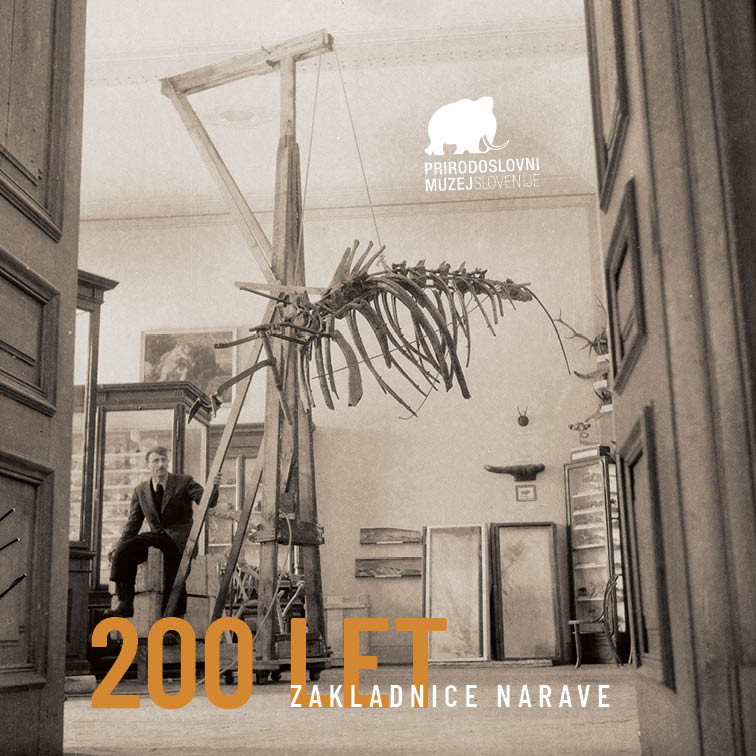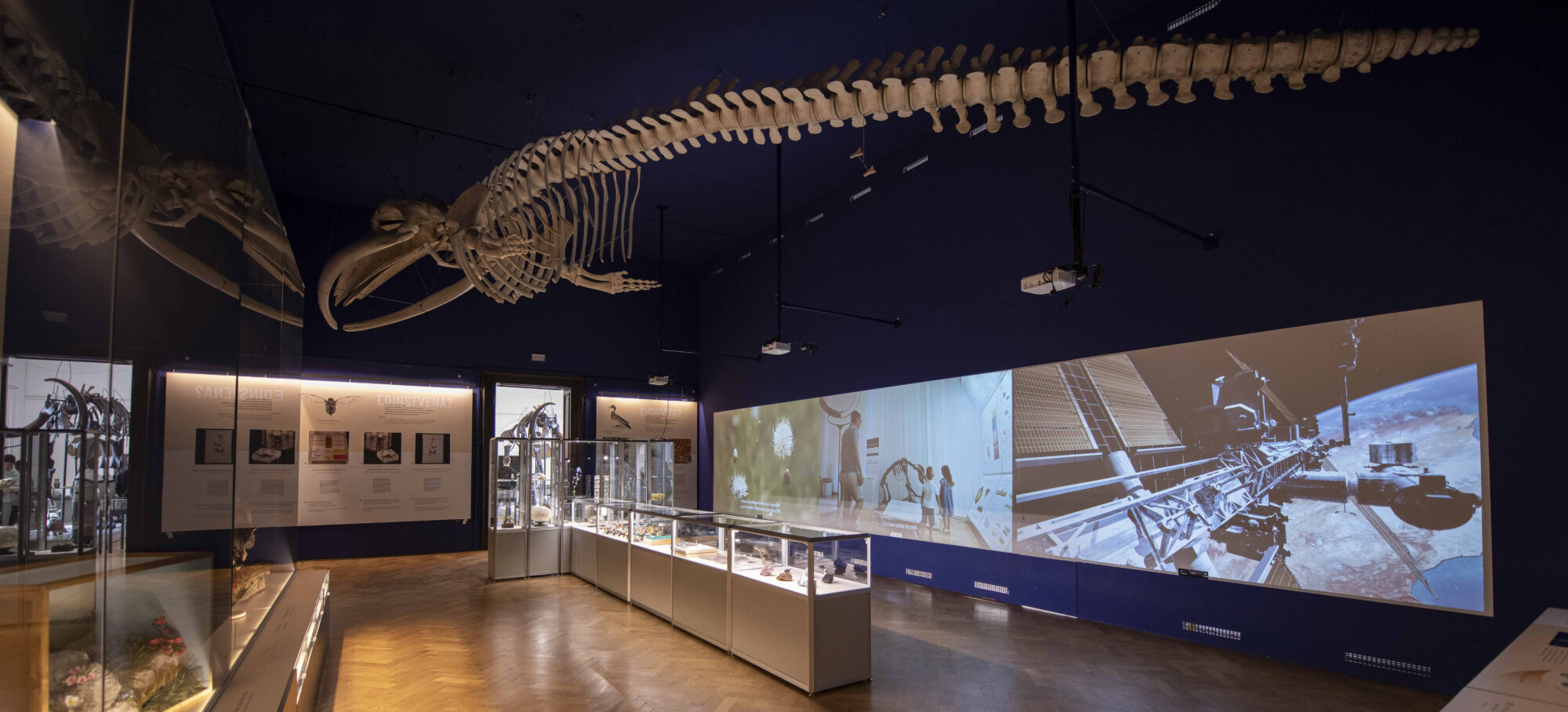With the exhibition titled 200 Years of the Nature Treasury, we mark this high jubilee of the founding of the very first museum in Slovenia, from which the Slovenian Museum of Natural History eventually emerged as well. Our museum holds, apart from the founding collections, the Zois collection of minerals, rocks and fossils and the Hohenwart collection of conch shells that are part of the permanent exhibition, several priceless treasures of Slovenian and world cultural heritage of natural origin. Some of them can be seen at the exhibition, while even more of them are presented in the catalogue, which bears the same title as the exhibition.
From the catalogue editorial:
200 Years of Nature in the Museum
The Slovenian Museum of Natural History, one of the successors of the Provincial Museum of Carniola, is celebrating 200th anniversary of its founding. It could be said that from 1821 on, nature has been on display in the Museum. In the past two centuries it has been indeed known under a different name, but from the very beginning, the Museum, like the ancient Greek museon, is still a place dedicated to the muses, a precious archive of nature, a sort of natural history temple. Nomen est omen, says the Latin proverb. Today, the Museum is known as the Slovenian Museum of Natural History. And if a museum communicates something, our Museum suggests a venerable age, or at least a long history, when natural world was more often used as a synonym for nature. Perhaps it sounds archaic, but it is very homey. The vocation suggested in the name is important for Slovenia, and is also written in it.
The selected specimens are bearers of stories about the significance of collecting, preserving, documenting, studying, interpreting, managing and exhibiting. And what do they communicate? Has their communicative value changed? We have merged the stories into chapters that approach nature in the Museum from different aspects. The life and work of all of us also count when, along the museum specimens, we are asking ourselves whether and why the treasure of nature is priceless: unique, wonderful, transient, vulnerable and denuded, as well as mysterious, yet eternal. 200 years – we are proud of our roots and we love our Museum. With valuable items, we appeal to politicians to do something to solve the space constraints that threaten the Museum’s functioning – including a permanent safe storage of the museum pieces on display.
Dr. Breda Činč Juhant, catalogue editor

Catalogue cover


